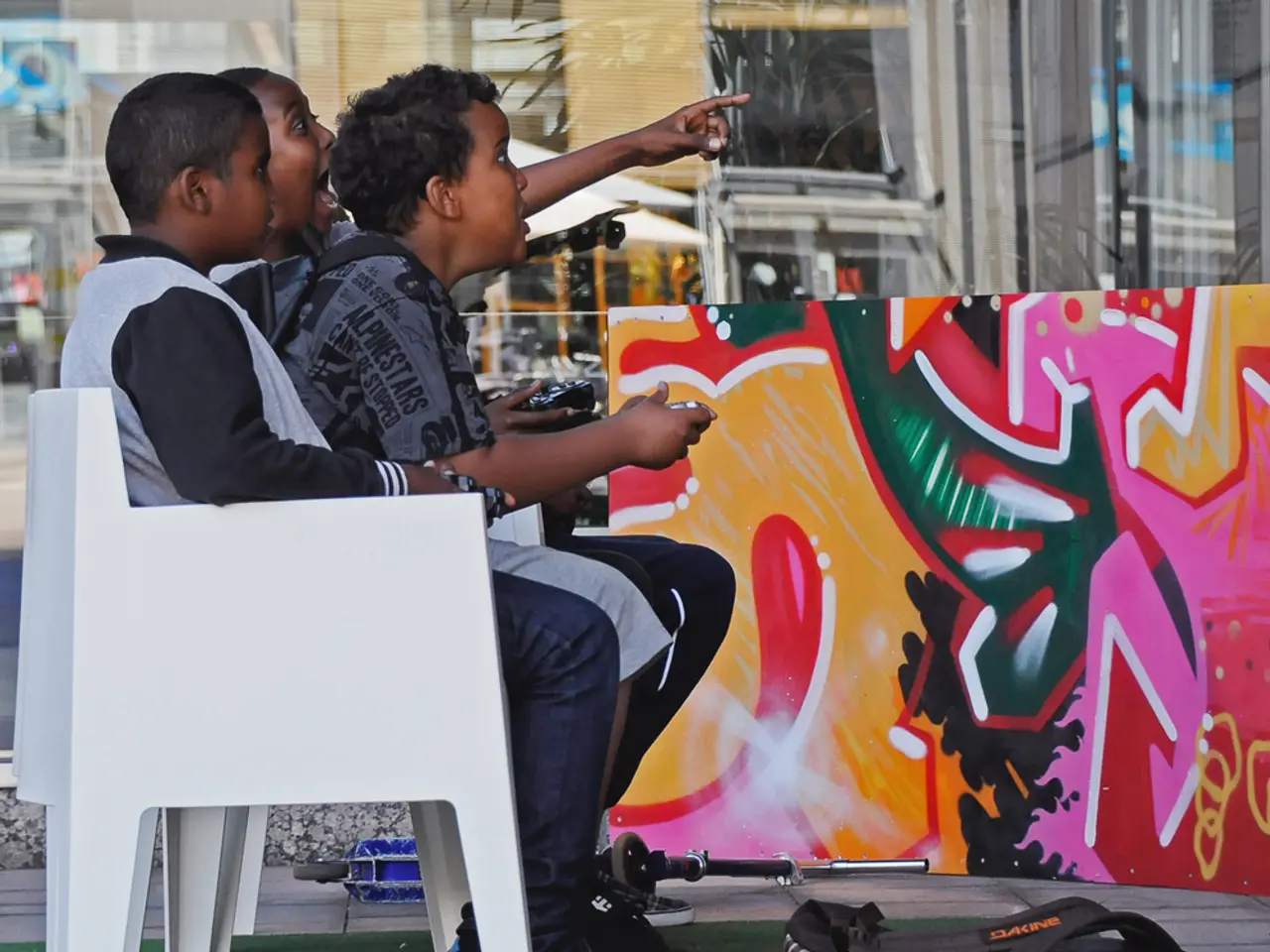Youngsters create a commemorative structure utilizing discarded plastic
In the heart of Kettwiger Straße, a captivating plastic waste sculpture has taken residence in Stadtwerke park, serving as a poignant reminder of the urgent need for sustainability. This artwork, part of or inspired by Dirk Krüll's award-winning Land-Art "Plastic Army" project, uses discarded waste as an artistic medium to provoke reflection about human consumption, environmental degradation, and the necessity of a sustainable future.
The sculpture, a visual and conceptual commentary on plastic waste, is beautifully composed within the park's natural surroundings. It draws attention to the ubiquity and environmental impact of plastic materials, while also serving as a memorial for plastic waste.
The "Plastic Army" series, of which the Stadtwerke park sculpture is a part, features striking landscapes adorned with artistically placed plastic objects. By situating captivating plastic forms in natural or public environments, Krüll transforms discarded waste into an art form that encourages environmental awareness.
The project, funded by the NRW Ministry of Family Affairs, was not just an artistic endeavour, but also an educational experience. Children and young people were actively involved in the creation of the sculpture, collecting and cleaning waste to contribute to its construction. A neighbourhood tour with tongs and buckets was conducted as part of the project, sensitising participants to the handling of waste and city pollution.
The sculpture's installation on the privacy screen of Stadtwerke park is intended to encourage passersby to pause and reflect. Its creation process emphasised the upcycling of waste, teaching participants that they can influence societal problems through their actions. The project aims to educate children and young people about the waste cycle, empowering them to become agents of change in their communities.
As the sculpture stands tall in Stadtwerke park, it serves as a testament to the power of art in raising awareness about environmental issues. It invites us to ponder our consumption habits, consider the impact of our actions on the environment, and inspire us to take steps towards a more sustainable future.
- This sculpture in Stadtwerke park, made from discarded plastic materials, is a captivating example of environmental-science art, inspiring reflection on human consumption and the necessity of a sustainable future.
- The "Plastic Army" project, which includes this sculpture, is not only an aesthetic endeavour but also an educational tool, encouraging children and young people to learn about the waste cycle and become agents of change in their communities.
- The sculpture's presence in the home-and-garden setting of Stadtwerke park serves as a reminder that even within our lifestyles, small changes towards sustainable living can have significant environmental impacts.
- In the realm of education-and-self-development, this project demonstrates the potential of art to provoke thought, foster environmental awareness, and encourage sustainable practices in our daily lives.




